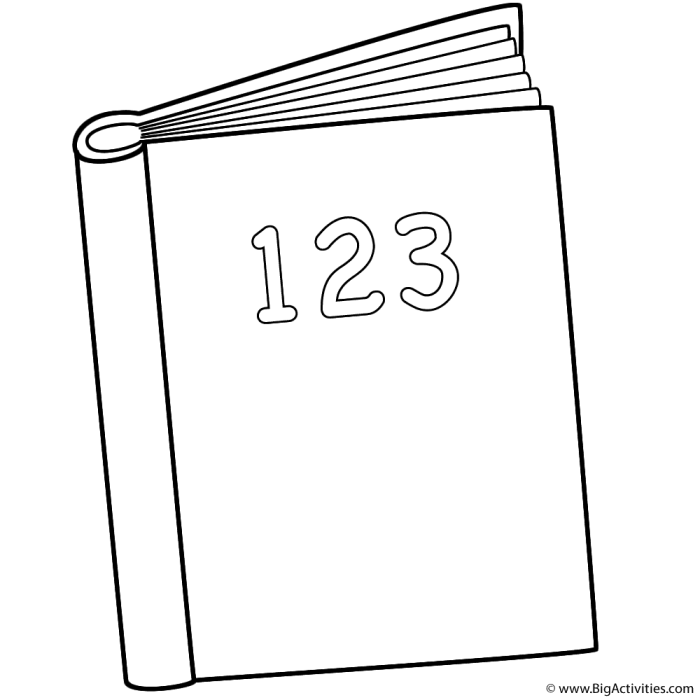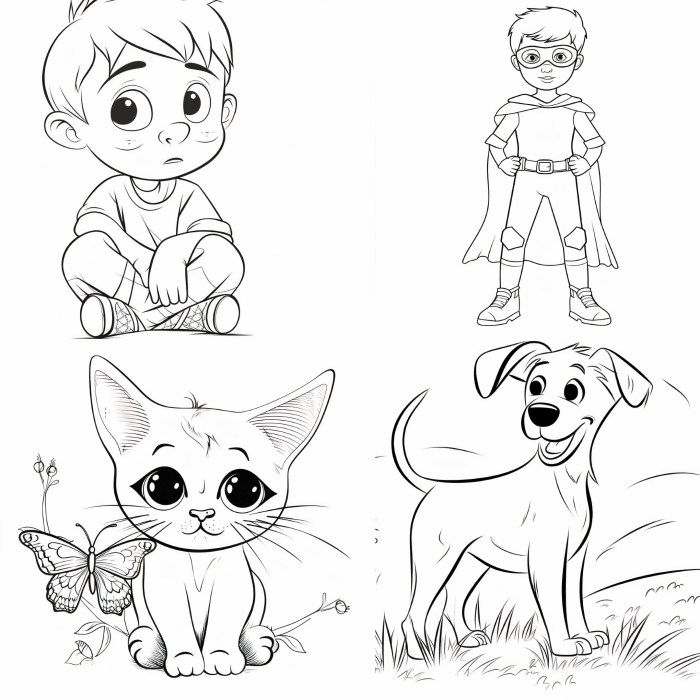The Artistic Style of “Chance the Coloring Book”
“Chance the Coloring Book,” a hypothetical coloring book based on the musical artist Chance the Rapper, would likely employ a vibrant and expressive artistic style reflecting his personality and music. The overall aesthetic would aim to capture the energy and positivity often associated with his work, while also allowing for creative interpretation by the user.The dominant color palettes would probably incorporate bright, bold hues mirroring the upbeat nature of much of his music.
Think sunny yellows, energetic oranges, deep blues evocative of soulful reflection, and perhaps splashes of vibrant greens and purples to add depth and contrast. Muted tones might be used sparingly, perhaps to highlight specific elements or create a sense of calm within the overall vibrant scheme.
Comparison with Other Adult Coloring Books
“Chance the Coloring Book” would differentiate itself from other adult coloring books through its unique incorporation of themes and imagery directly inspired by Chance’s music and persona. Many adult coloring books focus on intricate mandalas, floral patterns, or fantastical creatures. While some might incorporate similar elements, “Chance the Coloring Book” would likely feature more abstract designs, perhaps incorporating musical notes, stylized portraits, or representations of lyrics and album art.
Chance the Coloring Book offers a unique approach to creative expression, differing from typical children’s coloring books. For a broader selection of options, you might explore other resources like this website offering a wide variety of coloring book for kids , which can be a helpful comparison point. Returning to Chance, its distinctive style makes it a compelling choice for those seeking a different coloring experience.
The overall aesthetic would aim for a more modern, playful, and less strictly traditional approach compared to many other coloring books in the market. The emphasis would be on self-expression and personal interpretation, allowing users to inject their own creativity and connect with Chance’s music on a visual level.
Comparative Analysis of Artistic Styles
The following table compares the hypothetical “Chance the Coloring Book” with three established adult coloring books, highlighting differences in line art style, color suggestions, and overall aesthetic. Note that this is a comparative analysis based on common styles in the adult coloring book market and how they might relate to a hypothetical “Chance the Coloring Book”.
| Coloring Book | Line Art Style | Color Suggestions | Overall Aesthetic |
|---|---|---|---|
| Chance the Coloring Book (Hypothetical) | Bold Artikels, some areas with less defined lines to encourage free-form coloring, incorporating elements of abstract art and stylized imagery related to Chance’s music and persona. | Vibrant, bold colors; use of bright yellows, oranges, blues, greens, and purples; some muted tones for contrast and emphasis. | Modern, playful, energetic, expressive, reflective of Chance’s music and personality. |
| Secret Garden (Johanna Basford) | Intricate, detailed line work, highly detailed botanical illustrations. | Subtle, natural colors; use of greens, browns, and other earth tones; delicate color washes. | Calm, serene, intricate, nature-focused. |
| Enchanted Forest (Johanna Basford) | Intricate, detailed line work, featuring fantastical creatures and detailed environments. | Rich, jewel-toned colors; use of deep blues, greens, purples, and golds; some bright accents. | Magical, whimsical, intricate, fantastical. |
| Lost Ocean (Johanna Basford) | Intricate, detailed line work, depicting underwater scenes and marine life. | Cool, aquatic colors; use of blues, greens, teals, and purples; some bright corals and oranges. | Serene, mysterious, intricate, underwater-themed. |
Themes and Imagery in “Chance the Coloring Book”

“Chance the Coloring Book” utilizes vibrant and often surreal imagery to convey complex themes of faith, family, and the artist’s personal journey. The illustrations, while seemingly childlike in their simplicity, possess a depth of symbolism that enriches the listening experience and adds another layer to the album’s already multifaceted narrative. The recurring motifs and symbolic elements work together to create a cohesive visual representation of Chance’s emotional and spiritual landscape.The imagery in “Chance the Coloring Book” is characterized by a striking juxtaposition of bright colors and darker, more introspective elements.
This visual tension mirrors the lyrical content, which often balances moments of joy and celebration with reflections on personal struggles and spiritual searching. The recurring use of specific symbols, such as flowers, children, and religious iconography, contributes to the overall narrative arc of the album, creating a visual tapestry that mirrors the album’s emotional and thematic development.
Recurring Themes and Motifs, Chance the coloring book
The illustrations consistently feature recurring themes and motifs that directly reflect the lyrical content and overall mood of the album. These elements are not merely decorative; they are integral to understanding the deeper meaning behind the artwork. The consistent use of these elements reinforces the album’s central themes and provides a visual narrative that complements the musical storytelling.
- Flowers: Flowers frequently appear throughout the artwork, often depicted in vibrant, almost unrealistically bright colors. They symbolize growth, renewal, and the beauty that can emerge even from difficult circumstances. The abundance and variety of flowers suggest a sense of hope and resilience. For instance, one could imagine a particular illustration featuring a field of sunflowers, their faces turned towards the sun, symbolizing Chance’s pursuit of light and positivity amidst personal challenges.
- Children: Images of children, often depicted playing or interacting with their families, represent innocence, purity, and the importance of family bonds. These images highlight the themes of faith and family that are central to the album’s narrative. One might envision an illustration showing children playing together in a sun-drenched park, symbolizing the carefree joy and simple pleasures of life.
- Religious Iconography: Subtle elements of religious iconography, such as crosses or religious figures, appear throughout the artwork, reflecting Chance’s exploration of faith and spirituality. These symbols are not overtly presented but are woven into the illustrations in a way that subtly underscores the album’s spiritual undercurrents. An example could be a faintly visible cross subtly incorporated into the background of an illustration, representing Chance’s journey of faith and spiritual growth.
Symbolic Interpretations of Imagery
The symbolic meaning of the imagery extends beyond literal representation, adding layers of complexity to the album’s visual narrative. The symbolic use of color, setting, and character interactions all contribute to a richer understanding of the album’s themes. The seemingly simple illustrations possess a depth that rewards careful observation and contemplation.
- Color Palette: The predominantly bright and vibrant color palette represents joy, hope, and spiritual awakening. However, the inclusion of darker shades and muted tones introduces a sense of introspection and acknowledges the struggles and complexities of life. The interplay between light and dark colors reflects the album’s emotional range.
- Character Interactions: The illustrations often depict Chance interacting with family members or other significant figures. These interactions highlight the importance of relationships and the support system that has helped him navigate his personal journey. The emotional connection portrayed in these interactions mirrors the themes of family and community found in the lyrics.
- Surreal Elements: The inclusion of surreal or dreamlike elements adds a layer of ambiguity and invites multiple interpretations. These elements could represent Chance’s internal struggles, his spiritual explorations, or the complexities of his personal experiences. The use of the surreal allows for a more abstract and emotionally resonant visual language.
Illustrative Techniques and Design Elements

Chance the Rapper’sColoring Book* showcases a vibrant and eclectic visual style, moving beyond simple album art to create a cohesive and impactful aesthetic experience. The album’s visuals are characterized by a playful use of color, texture, and line weight, contributing significantly to its overall feel and message. These techniques, while seemingly simple, work together to create a unique and memorable visual language that complements the music’s upbeat and soulful nature.The illustrative techniques employed inColoring Book*’s artwork effectively communicate themes of joy, spirituality, and community.
The consistent use of bold colors and playful imagery creates a sense of energy and optimism, reflecting the album’s overall positive tone. Variations in line weight, shading, and texture add depth and complexity, preventing the artwork from becoming overly simplistic or childish. The deliberate choices in artistic style reinforce the album’s themes and enhance the listener’s emotional connection with the music.
Line Weight and Shading Variations
The impact of line weight and shading is particularly noticeable when comparing different illustrations within the
Coloring Book* artwork. For instance, consider three distinct examples
one featuring Chance himself, another depicting a vibrant cityscape, and a third showcasing a close-up of a textured surface. In the portrait of Chance, thicker lines might define his features, creating a sense of strength and presence, while thinner lines are used for details like hair or clothing, allowing for a more delicate rendering. The cityscape illustration might employ a variety of line weights to differentiate foreground and background elements; thicker lines for buildings in the foreground creating a sense of proximity and importance, while thinner lines for distant buildings establish depth and perspective.
Finally, the close-up of the textured surface uses varying line weights to suggest the density and roughness of the material; heavier lines emphasize raised areas and create shadows, while thinner lines suggest smoother transitions.
Illustrative Mood Through Line Weight
Imagine a single illustration depicting a child holding a balloon. Using only variations in line weight, we can dramatically alter the mood. A heavy, bold Artikel around the entire image, particularly thick around the child’s figure, could create a feeling of weight, perhaps even sadness or anxiety. Conversely, a lighter, more delicate line weight throughout the illustration, with particularly thin lines used for the balloon, might convey a sense of lightness, joy, and carefree innocence.
Finally, a combination of thick and thin lines – thick lines for the child’s determined grip on the balloon and thin lines for the delicate balloon itself – might create a sense of tension and anticipation, suggesting a moment of precarious balance. The contrast in line weights between the child and the balloon visually communicates the emotional relationship between them.
Potential for Creative Expansion: Chance The Coloring Book

The success of “Chance the Coloring Book” hinges not only on its artistic merit but also on its inherent adaptability for expansion into a wider range of creative products and experiences. The vibrant imagery, relatable themes, and overall positive tone lend themselves to a multitude of applications beyond the coloring book itself, offering significant potential for revenue generation and brand building.
This section explores several avenues for extending the “Chance the Coloring Book” concept, from merchandise to companion products and adaptations for other media.The inherent flexibility of the coloring book’s design allows for a diverse range of creative extensions. The existing artwork could be easily repurposed for various merchandise, while the book’s central themes of self-discovery, positivity, and artistic expression could be further explored in companion products and alternative media.
This offers a multitude of opportunities for both creative exploration and commercial success.
Companion Product Concept: “Chance’s Creative Journal”
This companion product would build upon the coloring book’s success by offering a space for users to further engage with the themes and imagery. “Chance’s Creative Journal” would be a visually appealing journal featuring prompts inspired by the coloring book’s illustrations and themes. Each page would include a unique, smaller-scale reproduction of an illustration from the coloring book, alongside space for journaling, sketching, or other creative expression.
The target audience would be the same as the coloring book – adults and older teens seeking a creative outlet for self-reflection and positive self-expression. The journal could include inspirational quotes, space for goal setting, and prompts designed to encourage self-discovery and mindfulness, aligning with the overall message of the coloring book. The journal’s physical design would maintain a similar aesthetic to the coloring book, using high-quality paper and a pleasing, cohesive design.
Imagery in Different Contexts
The book’s imagery could be effectively translated into various merchandise and home decor items. For example, the vibrant illustrations could be printed on apparel such as t-shirts, tote bags, and phone cases, targeting a younger, more fashion-conscious audience. For home decor, the images could be adapted into wall art prints, throw pillows, or even wallpaper, offering a more sophisticated and mature application of the artwork.
This would expand the brand’s reach and appeal to a wider consumer base. Consider a line of vibrant throw pillows featuring key illustrations, appealing to a home décor market seeking unique, positive, and expressive additions to their living spaces.
Adaptation for Different Mediums
The themes and imagery of “Chance the Coloring Book” could be adapted for various media. An animated short film could tell a story centered around the characters and motifs present in the coloring book, potentially incorporating a narrative of self-discovery and overcoming challenges. The animation style could mirror the coloring book’s aesthetic, maintaining a vibrant and playful tone.
Alternatively, a short story could be written, expanding on the book’s themes and creating a deeper narrative around the characters and their journey. This story could explore the emotional depth hinted at in the illustrations, providing a more nuanced and emotionally resonant experience for readers. The story could be marketed as a companion piece to the coloring book, deepening the overall experience for fans.


